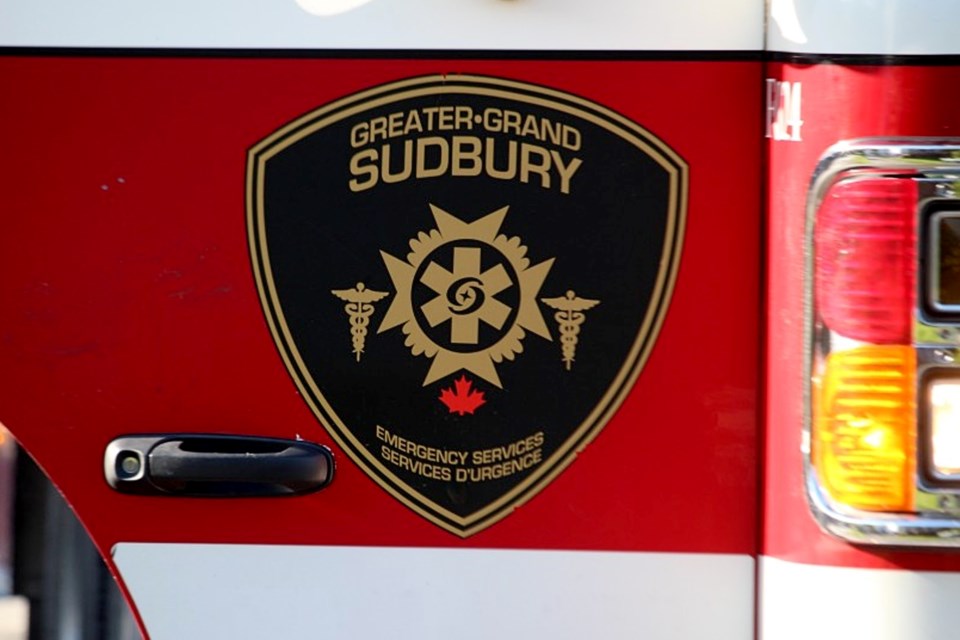Wide-sweeping changes have been proposed in the city’s long-awaited report regarding its network of emergency services infrastructure.
Several fire stations are recommended for consolidation and one station is slotted for relocation in the report drafted by Operational Research in Health Ltd. and responded to in another report by city Fire and Paramedic Services Chief Joseph Nicholls.
Although the city supports the majority of recommendations made by Operational Research in Health Ltd., they disagree with the notion of consolidating the Azilda and Chelmsford stations.
“The building conditions of Azilda and Chelmsford stations are satisfactory; consolidating them would increase response times in Azilda,” according to Nicholls’ report.
The proposed change would have added 3:12 to the 90th percentile response time in Azilda (the time in which 90 per cent of responses are made). The Chelmsford response time was projected to have been reduced by 54 seconds.
“Staff believe the benefits of consolidating these two stations as described in the ORH report, while worthwhile, do not outweigh the risks.”
Aside from that, Nicholls’ report notes the city supports various other ORH recommendations, which include:
- Capreol, Levack, Dowling, Whitefish and Chelmsford should remain at their current sites.
- Consolidate Skead and Falconbridge into ideal site for Garson
- Consolidate Val Caron and Hanmer at current site in Val Thérèse
- Consolidate Vermilion Lake into Dowling
- Consolidate Beaver Lake into Whitefish
- Consolidate Wahnapitae and Coniston at ideal site
- Consolidate Waters, Lively and Copper Cliff at Anderson Drive
- Relocate the Minnow Lake station two kilometres north.
- Consolidate paramedics with fire services in Capreol
The report also urges the relocation of the Van Horne Street station 500 metres north, but with no property available the city has determined this is not a viable option. Its ideal location would be at Paris and Lloyd, where it would shave 22 seconds in average response time from the 90th percentile. By this metric, relocating the Minnow Lake station would cut 20 seconds.
These recommendations aim to mitigate “the risk associated with continuing to operate existing stations beyond their expected useful life,” according to Nicholls’ report.
“Ensuring emergency service buildings meet operating requirements allows staff to focus on response efforts, improves the work environment for staff, and maximizes the usefulness of limited municipal funds. The plan described here presents no staffing implications and does not impair service levels.”
The overall 90th percentile response time change if all of ORH recommendations were implemented (including consolidating the Azilda and Chelmsford stations, which Nicholls advised against) is a reduction of 10 seconds, according to their modeling.
Outside of Azilda/Chelmsford, the most extreme changes would be in Garson, which would benefit from a response time reduction of 1:06, and Falconbridge, whose response times would increase by 52 seconds. Two unidentified areas would see response times increase by one minute and reduce by 1:12 respectively. A full breakdown of response time impacts is available on Page 131 of the ORH report, which is available by clicking here.
The OHR study was conducted in response to buildings no longer fully meeting operational requirements. Its $198,000 cost was paid for through the province’s Audit and Accountability Fund.
Approximately $1.8 million has been spent on maintenance of fire and paramedic stations since 2014, according to Nicholls’ report, which he clarified is “only anticipated to grow with an unknown amount of unplanned capital needed to manage future asset failure.”
The life cycle for stations is 50 years, and the average age of the city’s 24 locations is 48 years.
Sustaining 24 fire and paramedic stations “is neither practical nor required,” according to Nicholls, and the ORH report, including proposed consolidations, will not result in any positions being eliminated.
“Station location and consolidations will combine staffing to create a larger pool of firefighters able to respond from a central location,” according to Nicholls’ report. “Consolidating stations creates an opportunity to draw from larger population areas, putting more people into stations and available to respond.”
Nicholls’ report up for city council debate on Dec. 13 includes recommendations that the Skead station’s consolidation into Garson, and the Vermilion station’s consolidation into Dowling be made permanent. These changes have already been made on a temporary basis. The Skead and Vermilion buildings and land would be declared surplus and put up for sale.
The report also recommends that staff develop a financing plan to support other changes recommended by ORH. A cost analysis and financing plan would be developed and presented to city council during the second quarter of 2023.
Prior to the ORH report’s release this week, a page of it was publicly leaked in September, sparking concern regarding the consolidation of services.
Ward 2 Coun. Michael Vagnini has already expressed opposition to the report’s findings, and Ward 3 Coun. Gerry Montpellier made an unsuccessful push in November to have the report released immediately. This, despite Nicholls clarifying that the city’s components of the report, including recommendations to city council, were not yet being completed at that time.
Vagnini said he was disappointed the information didn’t come out prior to the Oct. 24 civic election, “to allow both incumbents and new candidates to inform or debate their views on the matter with voters.” The ORH report released this week is dated Feb. 2, 2022.
The full report by Operational Research in Health Ltd. can be found by clicking here, and the city’s accompanying report can be found here.
City council will debate the report during their Dec. 13 meeting, whose public component begins at 6 p.m. The meeting can be attended in-person at Tom Davies Square or accessed via livestream by clicking here.
Tyler Clarke covers city hall and political affairs for Sudbury.com.
